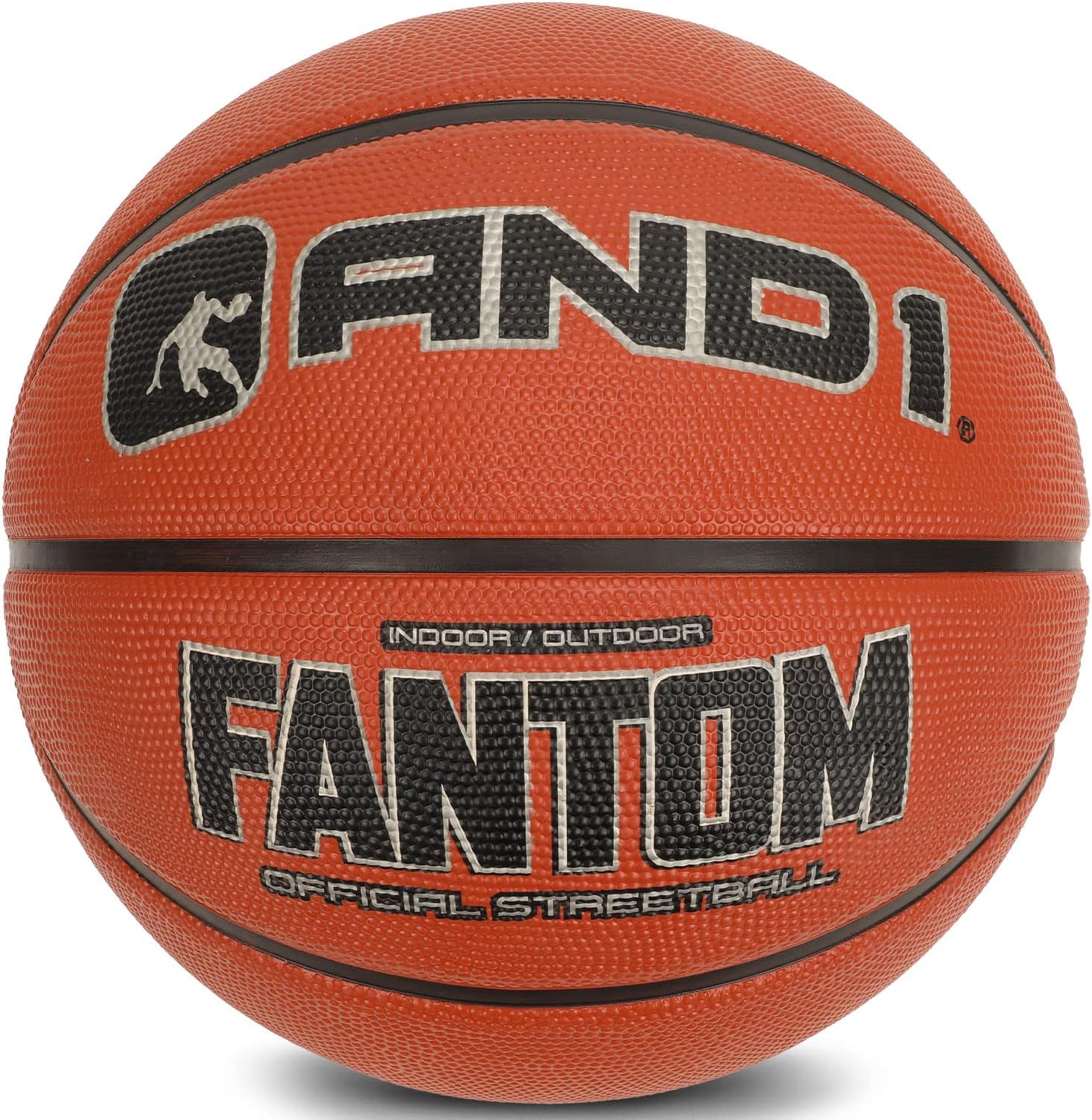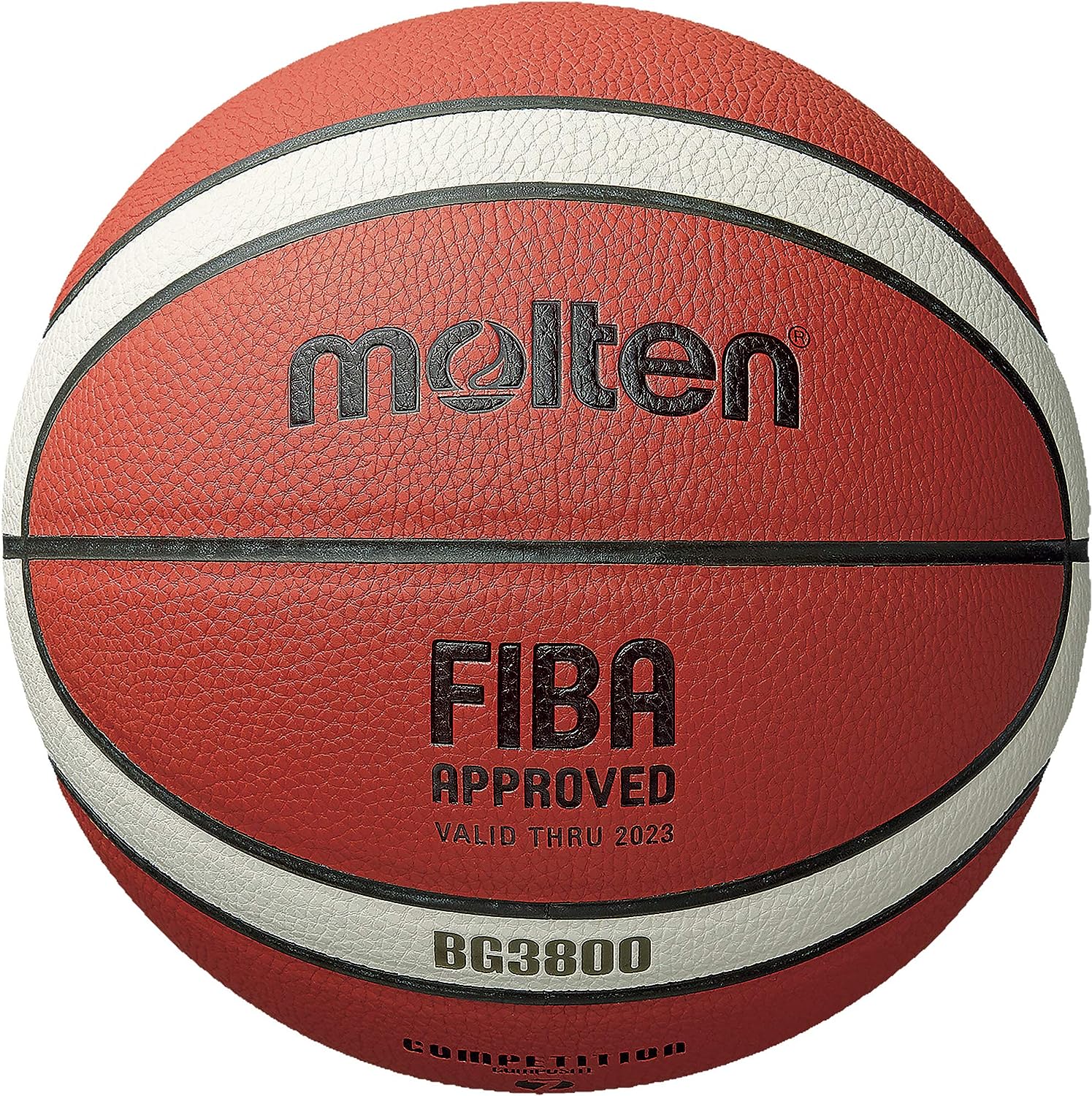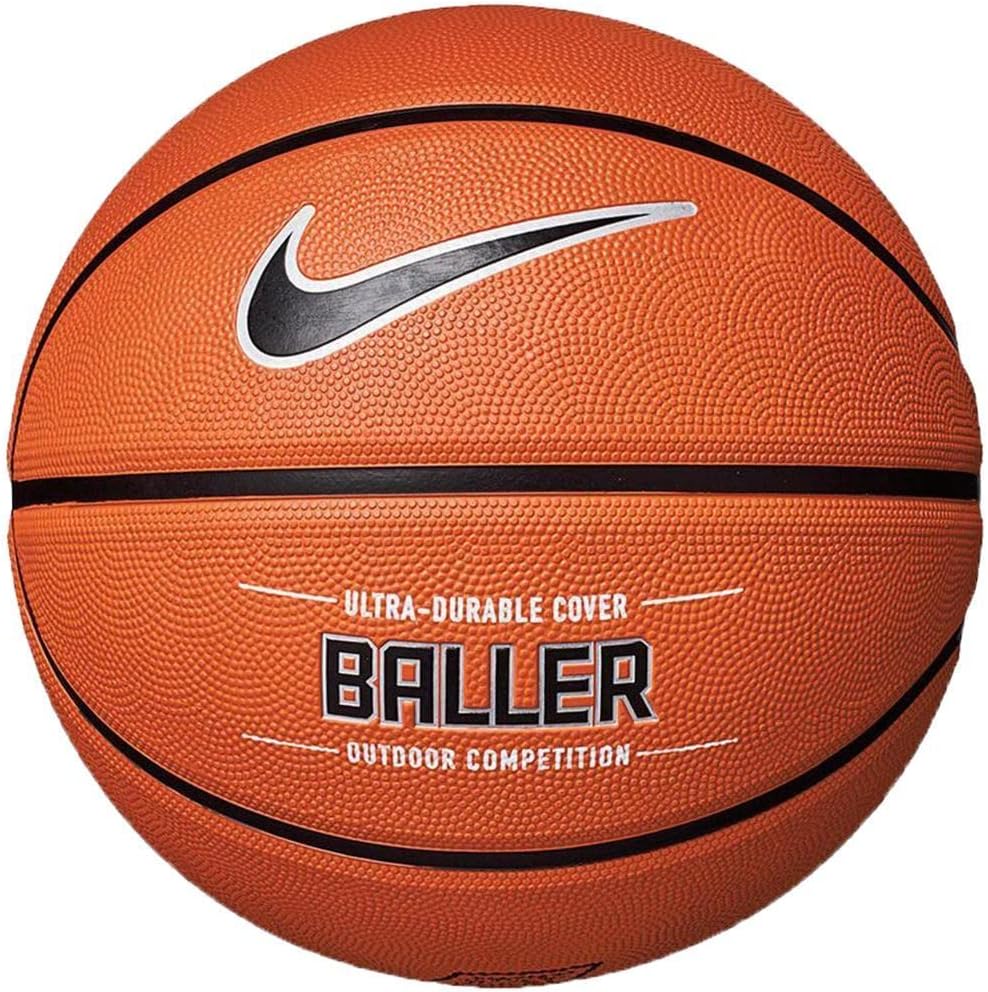Basketball is arguably one of the most popular sports among the general public. This sport requires not only skill and physical fitness, but also a suitable basketball to bring out your strengths.This article will take you deep into how to choose a basketball that suits you, so that you can feel at ease on the court.

Basketball Size Classification
Basketballs are classified based on their weight, circumference (or diameter), and the intended user group. According to the regulations of the International Basketball Federation (FIBA) and common standards, basketballs are typically categorized into the following sizes:
- Size 7 Basketball:
- Weight: 600-650 grams.
- Circumference: 75-76 centimeters, with a diameter of approximately 24.6 centimeters.
- Usage: This is the standard basketball used in men’s competitions and is certified by FIBA for adult male games. It is suitable for males aged 12 and above, as it aligns well with their hand size and strength.
- Size 6 Basketball:
- Weight: 510-550 grams.
- Circumference: 70-71 centimeters, with a diameter of approximately 22.6 centimeters.
- Usage: This is the standard basketball used in women’s competitions and is certified by FIBA for adult female games. It is suitable for females aged 12 and above, as it aligns well with their hand size and strength.
- Size 5 Basketball:
- Weight: 470-500 grams.
- Circumference: 69-71 centimeters, with a diameter of approximately 22.0 centimeters.
- Usage: This basketball is used in youth competitions and is suitable for individuals aged 12 and below. It is a moderate size, neither too heavy nor too light.
- Size 3 Basketball:
- Weight: 300-340 grams.
- Circumference: 56-57 centimeters, with a diameter of approximately 18.1 centimeters.
- Usage: This basketball is used in children’s competitions and is suitable for children aged 6 and below. It is lightweight and easy to control.

There are special-purpose basketballs such as training basketballs, which are usually heavier than standard basketballs to increase training intensity and difficulty, enhancing players’ hand feel and strength. Smart basketballs, equipped with sensors and chips, can connect to smartphones or tablets via Bluetooth to provide real-time feedback on athletic performance and technical analysis. However, these do not belong to the conventional size classifications.
Basketballs are classified by size primarily based on the age and gender of the intended user, ensuring that the basketball’s weight and size match the user’s hand size and strength, thereby enhancing the effectiveness and enjoyment of basketball play. When purchasing a basketball, it is recommended to choose an appropriate size based on personal circumstances and needs.
Classification Of Basketball Court Usage
Basketball is divided into indoor and outdoor balls according to the different venues used.
Indoor ball: With a smooth surface, high friction coefficient, and soft touch, it is suitable for indoor or clean outdoor use.
Outdoor ball: The wear-resistant surface and uneven particles can maintain stable friction even under harsh outdoor conditions.
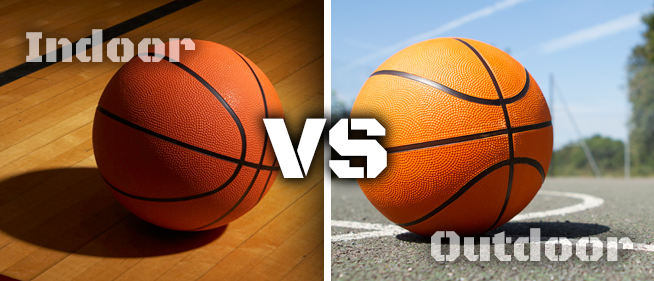
The Structure Of Basketball Balls
The structure of basketball balls is designed to provide optimal performance, durability, and control for players. Here’s a detailed breakdown of the typical components that make up a basketball:
- Cover (Outer Layer)
The cover, also known as the skin or surface material, is the outermost layer of the basketball. It’s in direct contact with the players’ hands and the court. Common materials used for the cover include:
Rubber: Typically used for outdoor basketballs due to its durability and ability to withstand rough surfaces and varying weather conditions.
Synthetic Leather (PU, PVC, etc.): Synthetic leather provides a balance of durability and performance, making it suitable for both indoor and outdoor use. It mimics the look and feel of genuine leather but at a lower cost.
Genuine Leather: High-end indoor basketballs may use genuine leather for superior feel and grip. However, it requires more maintenance and can be affected by weather changes. - Inner Layers
Beneath the cover, there are several inner layers that support the structure and performance of the basketball:
Carcass (Winding): The carcass consists of layers of high-tensile nylon or polyester threads wound tightly around the bladder. It provides shape and stability to the basketball.
Bladder: The innermost layer, the bladder is a butyl rubber or other airtight material that holds the air pressure. It’s responsible for the basketball’s bounce and shape retention. - Valve
The valve is a small opening in the basketball that allows for inflation and deflation. It’s typically made of metal or plastic and is designed to be airtight to prevent leakage.
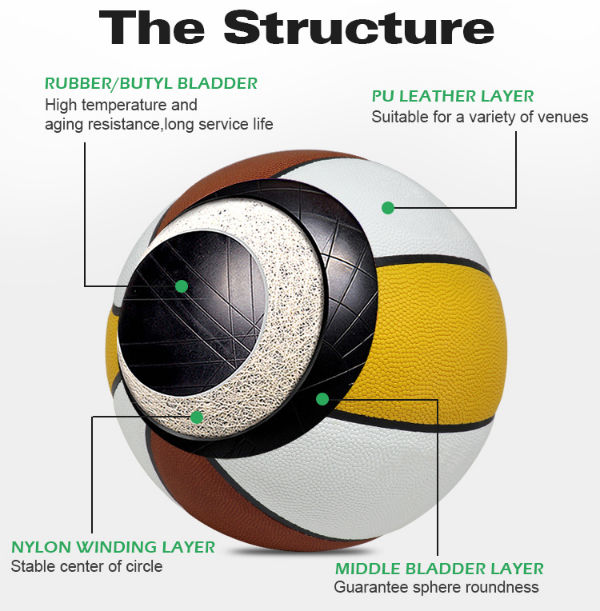
Additional Considerations
Standard basketballs are designed to meet specific weight and size requirements set by governing bodies like FIBA or NBA. This ensures consistency and fairness in competition.
Grip: The cover material and texture are designed to provide optimal grip for players, even in wet or sweaty conditions.
The materials and construction of the basketball are chosen to withstand the rigors of play, including repeated bounces, dribbles, and shots.
The structure of basketball balls is a combination of outer cover materials, inner layers for support and shape retention, and a valve for inflation. The specific materials and design features vary depending on the intended use of the basketball (e.g., indoor, outdoor, professional, recreational).
Five Essential Tips for Choosing the Right Basketball
Selecting the right basketball requires attention to detail and patience. Here are five essential tips to help you make the best choice:
Visual Inspection: Examine the basketball for any defects on its surface. Ensure the surface has moderate friction for a good grip. Avoid balls that are too smooth or have visible imperfections.
Olfactory Check: Smell the ball. A quality basketball typically has a leather-like scent, while a pungent or chemical smell could indicate poor materials.
Touch Test: Press the ball to assess its elasticity and toughness. Avoid basketballs that feel too soft or easily deform.
Weight Perception: The basketball should have a balanced weight—not too light or too heavy. This is important for control and accuracy during play.
Elasticity Assessment: Test the ball’s bounce by observing if it rebounds straight and consistently. A good basketball should bounce well and stop stably on flat ground.

Basketball Balls Maintenance
Maintaining a basketball is essential to preserve its performance and extend its lifespan. Follow these key practices:
1. Cleaning and Maintenance
Wipe the basketball with a damp cloth or sponge after use to remove dust and dirt. For stubborn stains, use a mild cleaner, ensuring no moisture seeps into the ball.Do not submerge or directly wash the basketball with water. If needed, use a slightly damp cloth for deep cleaning and air dry immediately.
2. Inflatable Management
Maintain proper air pressure for optimal performance. Use a dedicated air needle and pump to inflate when needed, avoiding overinflation.Always use a basketball-specific air needle. Lubricate the needle before inflating to reduce resistance and prevent damage.
3. Storage Environment
Keep the basketball in a cool, dry place away from direct sunlight to prevent deformation or aging.Ensure the storage area is free of sharp objects that could puncture or scratch the basketball.
4. Usage Precautions
Do not use the basketball in rainy, snowy, or humid conditions to prevent damage.Avoid placing heavy objects or sitting on the basketball to prevent deformation.Use the appropriate basketball for the playing surface (indoor or outdoor) to avoid excessive wear.
5. Special Maintenance
If the basketball’s surface begins to peel, use a rubber-specific adhesive for repair.Use specialized tools for minor repairs. If the damage is significant, consider replacing the basketball.
What Brand Of Basketball Balls Is Good?
WILSON:The Wilson NBA Authentic Series Basketball (Size 6, 28.5″) is the official NBA ball featuring pro-level feel and durability with its Pure Feel cover. It offers consistent performance with Ever Bounce construction and long-lasting air retention thanks to its specialized lining. The NBA Pro Seams provide a player-preferred channel design for enhanced control. Suitable for both indoor and outdoor play.
Spalding:Spalding is known for producing the official NBA game ball, which is made of genuine leather and offers excellent grip and control.A popular option for both indoor and outdoor play, offering good durability and feel.
Molten:Known for its distinctive 12-panel design and being the official ball of FIBA (International Basketball Federation), Molten balls are highly regarded for their consistency and performance.
Nike:A popular choice for competitive play, offering a great balance between grip, control, and durability.
AND1:The AND1 Fantom is a full-size 7 (29.5”) basketball with a durable rubber build and deep channel construction for enhanced grip and control. Perfect for both indoor and outdoor play, it’s designed to withstand wear and tear on any surface. The ball comes deflated, ready to be pumped up for your next game.
